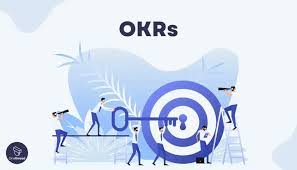Tech
Getting Everyone on the Same Page: How OKRs (and a Bit of the Right Software) Can Fix the Chaos

If you’ve ever led a team, you know how easy it is for everyone to get busy — but not necessarily aligned.
Marketing is chasing leads. Product is building features. Sales is closing deals. Everyone’s working hard, but somehow it doesn’t feel like you’re rowing in the same direction.
That’s where OKRs come in.
The Lightbulb Moment
I first stumbled onto OKRs (Objectives and Key Results) while reading about how Google built its early culture of focus and accountability.
The simplicity of it struck me — set an inspiring Objective, then define a few measurable Key Results that tell you if you’re actually moving the needle.
For example:
Objective: Strengthen our brand presence.
Key Results:
- Increase website traffic by 40%.
- Get featured in three major industry publications.
- Boost LinkedIn engagement by 25%.
That’s it. No complicated jargon, no endless PowerPoint decks. Just clarity.
When a company starts using OKRs properly, something shifts. Meetings get sharper. Priorities become obvious. People stop guessing what “success” means.
The Problem with Good Intentions
Of course, there’s always a gap between “understanding OKRs” and “actually using them.”
At first, most teams try to manage OKRs in spreadsheets or Notion pages. It’s fine for a small team or one quarter. But as soon as you try to scale, it falls apart.
People forget to update things. Progress isn’t tracked consistently. The connection between team goals and company goals gets lost.
That’s when most companies realize they need a dedicated OKR software — not to make things more complicated, but to make them easier to manage.
Why OKR Software Actually Helps
Good OKR software isn’t about adding more tools to your stack — it’s about giving everyone a shared place to see what matters.
Here’s how it changes the game:
- Everyone Sees the Same Goals
With OKR software, the company’s top objectives are visible to everyone. It’s not locked in a PowerPoint somewhere — it’s right there, live, and updated.
Transparency builds accountability. When people see how their work ties into something bigger, motivation goes up.
- Real-Time Progress, Not Guesswork
Instead of quarterly surprises (“Oh, we missed that target?”), you can see progress week by week. Many OKR tools integrate with your project management systems, so data updates automatically.
It’s a small thing, but it completely changes how you talk about progress.
- Better Conversations, Not Just Better Tracking
OKRs are only useful if people actually discuss them. Most OKR software includes check-in reminders and progress dashboards that make those conversations easier.
You can quickly spot what’s working, what’s stuck, and where priorities need to shift.
- Clarity Across Teams
The best OKR platforms let you cascade goals — meaning team and individual OKRs connect back to company objectives.
When engineering knows how their sprint contributes to a company-wide revenue target, it breaks down silos.
OKRs in Real Life
Here’s a quick story from a client I worked with — a fast-growing SaaS company of about 60 people.
They’d been setting goals for years, but things always felt scattered. Each department had its own system. When they introduced OKRs (and later rolled out an OKR tool), everything changed.
Within two quarters:
- Leadership could clearly see which objectives were lagging.
- Teams started writing sharper, measurable goals.
- The company stopped wasting time on projects that didn’t tie to a clear result.
They didn’t just get more “organized.” They got more aligned.
Choosing the Right OKR Software
There’s a growing list of OKR tools out there — WorkBoard, Profit.co, Perdoo, Weekdone, Gtmhub, and even ClickUp Goals if you want something all-in-one.
You don’t need to overthink it. Pick one that:
- Is easy for everyone to use.
- Integrates with your existing tools (Slack, Jira, Asana, etc.).
- Has strong reporting and visibility features.
- Fits your company’s size and workflow.
The best tool is the one your team will actually open every week.
The Human Side of OKRs
Here’s the truth: OKRs aren’t magic. They don’t automatically make people productive or inspired. They’re a framework — a way to have better conversations about what matters.
But when you combine that framework with a little bit of tech (good OKR software), you get a rhythm. A heartbeat.
People start focusing on outcomes, not just activities.
And that’s when real growth happens — not because you added another process, but because you finally gave your team the clarity they needed.
Final Thoughts
OKRs are about focus. They’re about alignment. But most importantly, they’re about creating a shared understanding of success.
If you’re still managing goals through scattered spreadsheets and Slack threads, it’s worth trying a dedicated OKR tool. Not because it’s trendy — but because it gives your team a clear, visible way to stay connected to what matters most.
At the end of the day, goals don’t move a company forward — people do. OKRs (and a bit of good software) just make sure everyone’s moving in the same direction.
-

 Celebrity12 months ago
Celebrity12 months agoWho Is Mindy Jennings?: All You Need To Know About Ken Jennings Wife
-

 Celebrity1 year ago
Celebrity1 year agoWho Is Jennifer Rauchet?: All You Need To Know About Pete Hegseth’s Wife
-

 Celebrity1 year ago
Celebrity1 year agoWho Is Enrica Cenzatti?: The Untold Story of Andrea Bocelli’s Ex-Wife
-

 Celebrity1 year ago
Celebrity1 year agoWho Is Klarissa Munz: The Untold Story of Freddie Highmore’s Wife
















